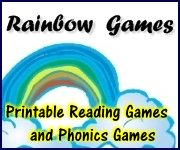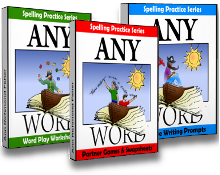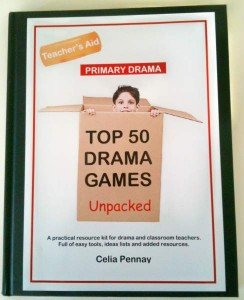Writing Conventions
Helping Your Students Put Finishing Touches on Their Work
Writing conventions ensure that a work is clear and easy to read. Help your students polish their stories with these hands-on creative writing tips from the six-trait writing process!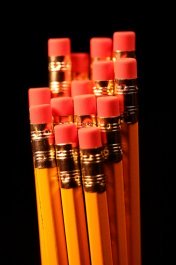 As in every stage of the writing process, kids learn to edit and apply correct English conventions by practicing with their own creative pieces. And each time your children make wise editing choices, they grow in confidence about using writing conventions. Correct usage becomes habitual!
As in every stage of the writing process, kids learn to edit and apply correct English conventions by practicing with their own creative pieces. And each time your children make wise editing choices, they grow in confidence about using writing conventions. Correct usage becomes habitual!
Teaching Writing Conventions
When working with writing conventions, I've found that it's important to start as simply as possible and put my students in control as quickly as possible. When kids learn new editing skills gradually- perhaps one per week- and practice to the point of second nature- they'll learn quickly. I've included several interactive activities below to help you do that.Before I ask you to get out the "fun stuff", however, let's examine the rhyme and reason of teaching writing conventions:
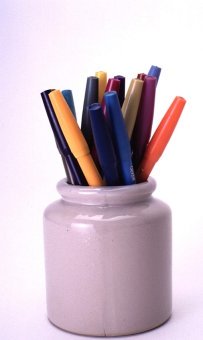
- Shift the emphasis in conventions from being right to being clear. If a student doesn't apply them perfectly in every sentence, that's okay. Practice is how one learns.
- Build skills over time. Some students are more skilled and some less so, but's that fine. All students will improve if you teach editing conventions slowly and steadily, like the fabled tortoise.
- Post easy-to-use, illustrated posters of basic writing conventions, editing symbols, and proofreading skills. Teach your class to refer to these before turning in papers!
- If you have younger students, set up four stations around the classroom for spelling, capitalization, punctuation, and expert help. Post appropriate tips at each station, and have your students rotate through stations, checking their own work. Ask them to write S for spelling, C for capitalization, and P for punctuation in the lower corners of their pages, as they edit for each convention. If they need your expert help, they should write E on their papers!
- Teach students to use different highlighter pens for marking examples of incorrect usage: orange for misspellings, red for misplaced punctuation, blue for wandering capital letters, and so forth. Color coding allows writers to see where to focus their energy!
Now let's look at some activities I've selected to help you teach the following within the context of real writing: spelling, capitalization, and punctuation:
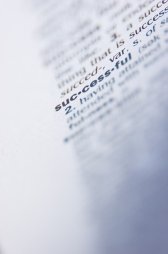 Demon Dictionaries. Ask your students to give you examples of common spelling demons: words that aren't spelled correctly but are close approximations. Make personal, illustrated "demon dictionaries", listing the misspellings alongside their correct counterparts. Encourage your students to use their dictionaries for quick reference as they edit their written work.
Demon Dictionaries. Ask your students to give you examples of common spelling demons: words that aren't spelled correctly but are close approximations. Make personal, illustrated "demon dictionaries", listing the misspellings alongside their correct counterparts. Encourage your students to use their dictionaries for quick reference as they edit their written work.
Spelling Pictionaries. Personal illustrated pictionaries can be made as paper booklets or from pocket folders. Have each student label pages alphabetically, adding new words with colorful illustrations throughout the year. Kids can reference their pictionaries as they write.
Reading Backward. Here's an effective old trick! As your students edit for correct spelling, have them read their pages from ending to beginning. They won't read what they thought they wrote! They'll read what they really wrote, one word at a time, out of context! The kids will actually see each word without getting swept away in the meaning.
Capital Clapping. Working in partners, have one student read his or her piece aloud, as the other student claps (or snaps!) for each capital letter. This is a great activity for kinesthetic learners, reinforcing proper capitalization.
Stoplight Capitals. Using red and green highlighter pens or crayons, have students mark their drafts appropriately as they edit. Green for capital letters and red for ending punctuation. At a glance, they'll then be able to see the beginnings and endings of sentences marked correctly.
The Royal Court of Punctuation. With your students, create royal titles for each punctuation mark and design whimsical, illustrated definitions on banners. Hang these banners around the room, reminding kids of the different marks available to them as they write. Here are a few sample royal titles:
- The Countess of Commas.
- The Lady of Apostrophes.
- The Duchess of Dashes.
- The Queen of Question Marks.
- The Princess of Periods.
There are no secrets to making good student editors! Just hard work and practice! Kids learn faster and more thoroughly if they edit their own writing, concentrating on one convention at a time. As students spell, capitalize, and punctuate correctly, they create clear, easily navigable pieces.
Students have years ahead to learn all that they need to know about editing. If we begin by teaching and modeling the basics, everything else will follow.
Return from Writing Conventions to Creative Writing Tips
Return from Writing Conventions to Creative Writing Ideas and Activities
Helping You Write Across the Curriculum!
copyright 2009-2013 www.creative-writing-ideas-and-activities.com
Our Most Popular Pages
5. Writing a Personal Narritive
10. Elements of Persuasive Writing
Recommeded Resources:
AnyWord(TM) Spelling Practice Series!
Worksheets, games and activities to use with any spelling words. Three volumes in all!
Stop Essay Pain!
LitWorks.com
Resources to help students prepare for literature examinations.
Teach Kids Drama!





